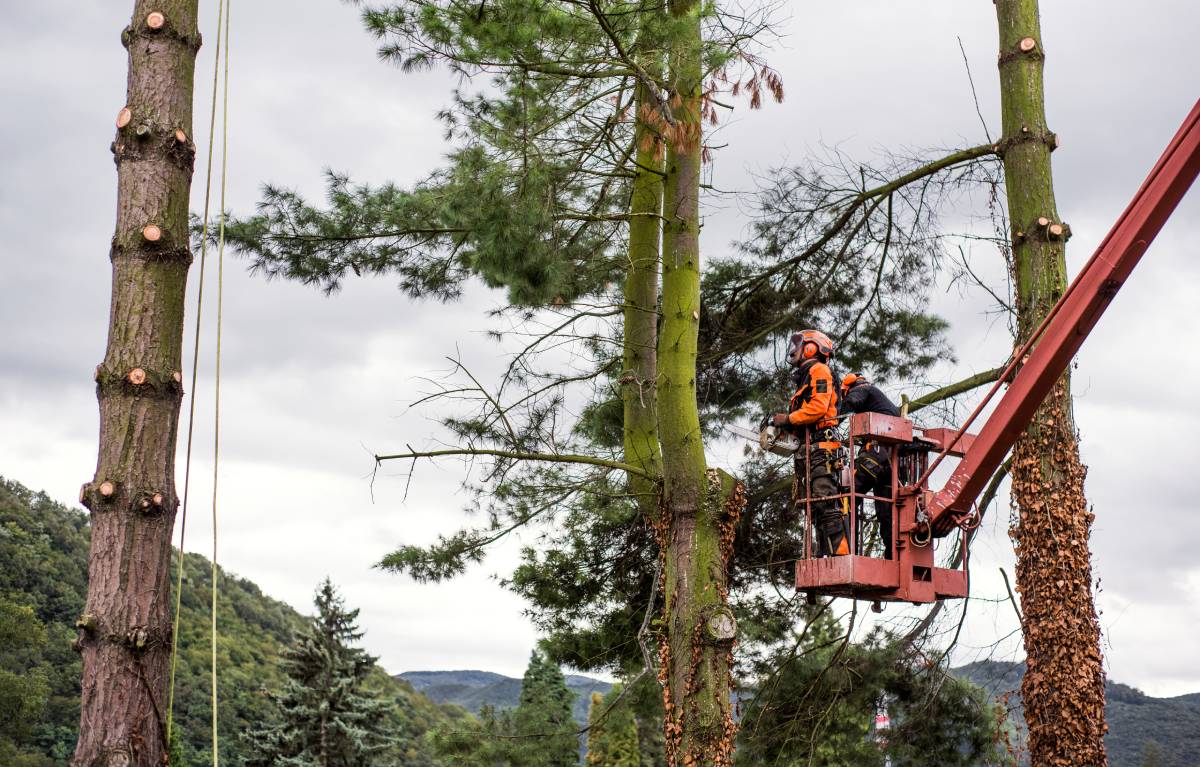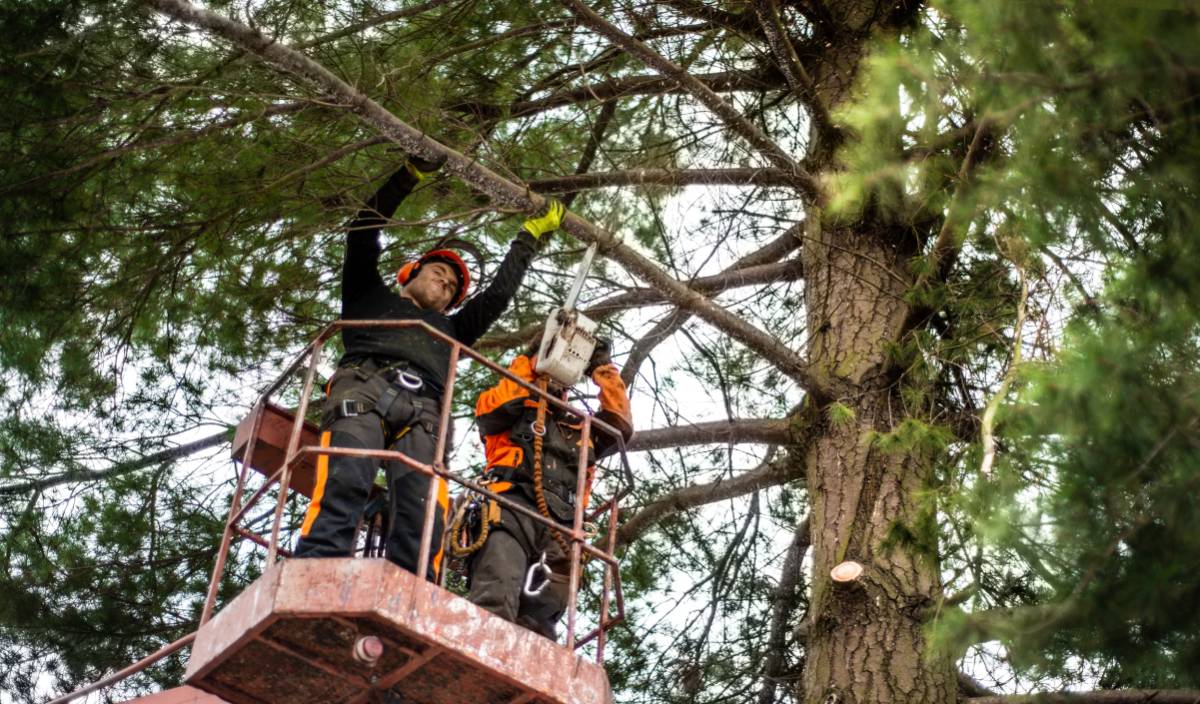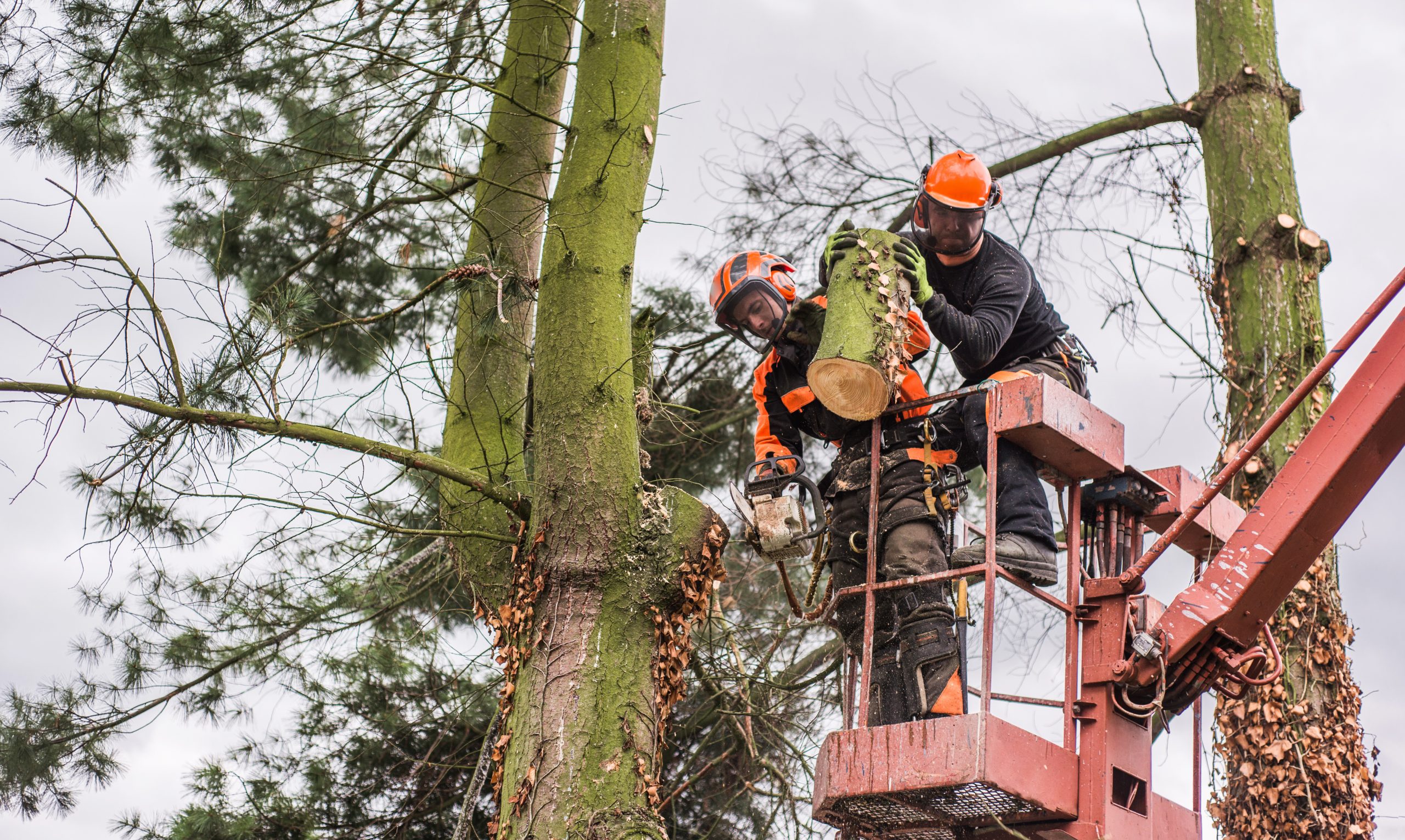Arborists are known by many different names, some of which you are likely more familiar with, for example, tree surgeons, loppers, or outfielders (to name a few). In fact, depending on where you are in the world, arborists have many different names, but there’s an important distinction between an arborist, and someone who simply climbs and cuts down trees.
In this article, we’re going to look at the meaning behind the word arborist, and what sets them apart from a regular tree lopping professional. If you’d like to learn more about the world of arboriculture, or if you are perhaps thinking about exploring this as a potential career path, then this is the article for you.
Read on to learn more!
What is the meaning of arborists?

So, we know that arborists work with trees, but what does it actually mean?
- For the etymology / origin of the word arborist: “main support or beam of a machine,” 1650s, from Latin arbor, arboris “tree,” from Proto-Italic *arthos, which de Vaan derives from PIE *herdhos “height, uprightness,” from root.
- The official definition is: a specialist who cares for and maintains trees.
But, how do we distinguish between an arborist and a regular tree lopper? Well, an arborist goes through higher education and continues to hone their craft and expand their knowledge. A regular tree lopper will have the basic skills, knowledge, and experience to work with trees under the instruction of a certified arborist. An arborist has much more knowledge in the various diseases and ailments that each species of tree faces, and is able to subsequently prescribe the appropriate remedy.
What is the work of an arborist?
Treating sick trees / saving damned trees from certain death
A classic example of when you might need an arborist over a regular tree lopper is if one of your trees is dying and you would like to know if it can be saved. Most loppers without the required knowledge would likely suggest felling and removing the tree before any diseases spread to the surrounding plant life. A qualified arborist however, would be able to identify the root cause of the problem and potentially reverse the problem. It’s not always possible of course, and it depends on the individual situation, however, in some cases, an arborist can save a tree from certain death.
Relocating trees
Additionally, arborists are experts in relocating trees. Felling and removing a tree isn’t the only course of action. If you have a tree that you don’t want blocking your view, but don’t want to lose it, an arborist, in some cases, would be able to move the tree – including the root structure – and replant it somewhere else.
Tree consulting
Let’s say you are a commercial property owner and you have trees on your land. You would need to hire a certified arborist to come up with an annual tree-care plan for you – particularly if the trees are near public walkways.
The last thing you’d want as a business owner is to have a lawsuit on your hands because the trees on your property were neglected, the branches grew weak and died, began to rot, snapped off in the wind and injured one of your customers.
An arborist would be able to consult you on how to best care for the trees on your property, both to keep them looking gorgeous, and to ensure that they are happy, healthy, and bound for a long life.
Arborists can also consult residential property owners as well. You may not want to hire an arborist to carry out the work (as some people love to tend to their garden and trees), however, you could always benefit from some industry-expert advice from someone who has dedicated their career to the study of tree care and maintenance.
Pruning trees

An arborist is exceptionally-well gifted when it comes to pruning trees and properly tending to them. There is a fine art and a science to tree pruning and the techniques and requirements vary from species to species. Arborists are well-versed in all of these things and will be able to ensure that all of the trees on your property are perfectly tended to. Regular loppers without sufficient knowledge of the tree species in question may stick to a blanket standard approach to pruning and invariably cause unnecessary trauma.
What qualifications do arborists need?
Are you interested in becoming an arborist but you have no idea where to start? Here’s a closer look at the various qualifications required to get started:
- In Australia, you’ll need to complete a traineeship in Horticulture and Arboriculture (there are different entry requirements depending on the course itself, however, having finished Year 10 is typically required by employers.
- Bachelor’s or graduate degrees can also help if you want to earn a career in a research position. For example, if you are interested in preservation and sustainability.
- If you are coming to Australia from overseas you’ll be required to complete an equivalent apprenticeship qualification or have plenty of prior experience (e.g., a minimum 3 years on the job).
- For those who wish to start their own arboriculture business, you’ll need to acquire the correct licences and insurance. Naturally, you’ll be better off doing your apprenticeship and learning on the job before starting your own business, however, if you are more interested in the managerial side of things then it’s definitely an option.
Conclusion
Arborist earn quite a nice salary as well – particularly after a certain amount of time in the field. If you are keen to explore a new career path that will keep you outdoors in the sunshine (and the rain), then being an arborist is a highly rewarding adventure worth consideration.
You’ll stay active, fit, and your day will be packed with new and exciting challenges. Plus, who could ever grow tired of climbing and cutting down trees every day, right?
We hope that you’ve found this article inspiring and wish you the best of luck, whatever you decide to do.






